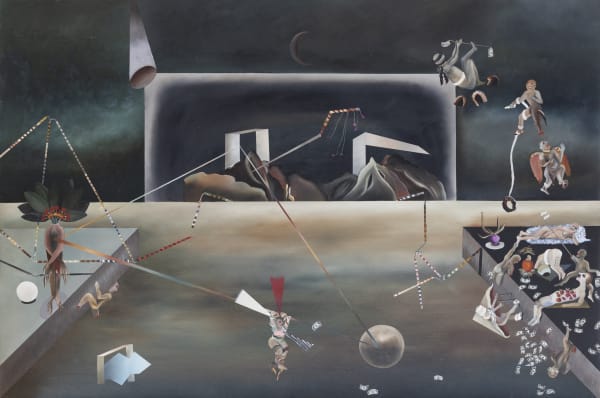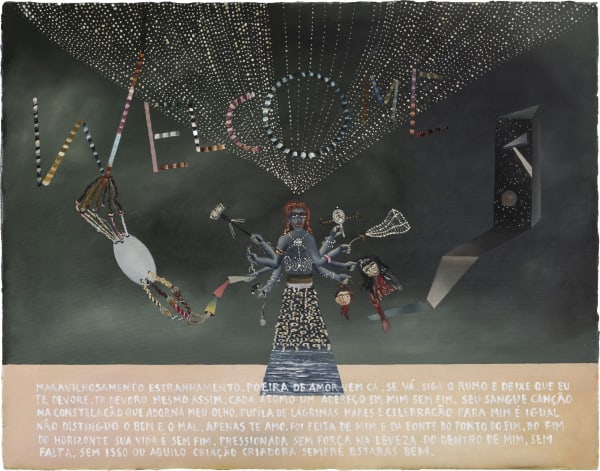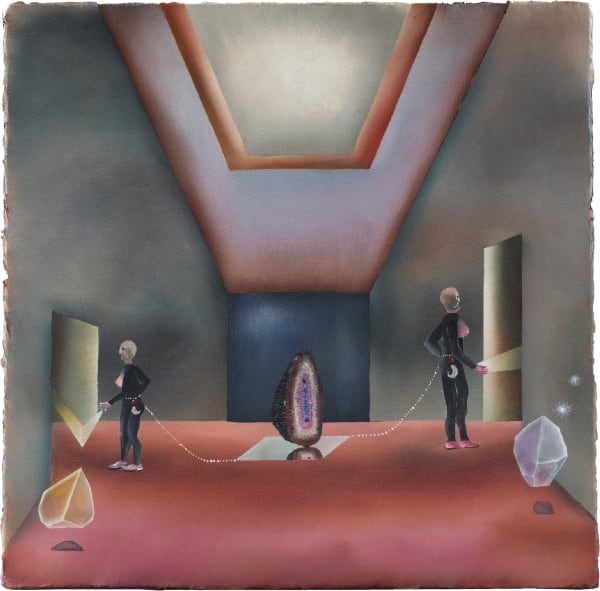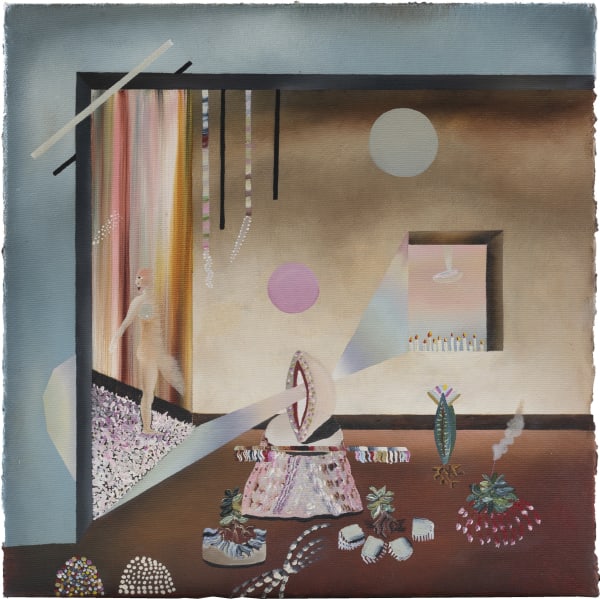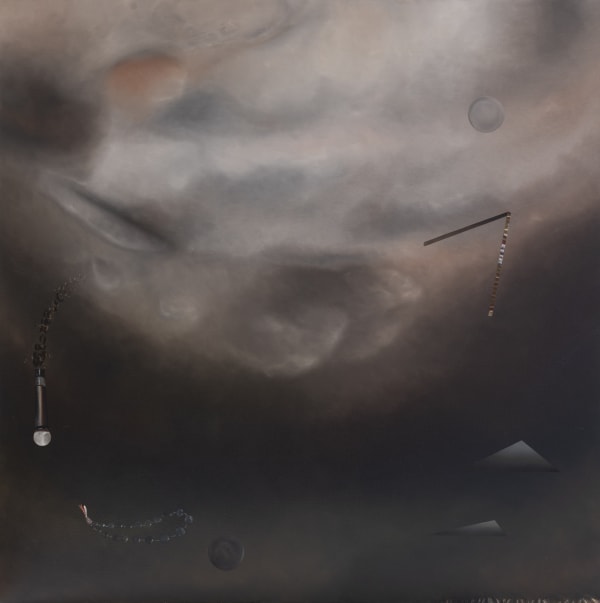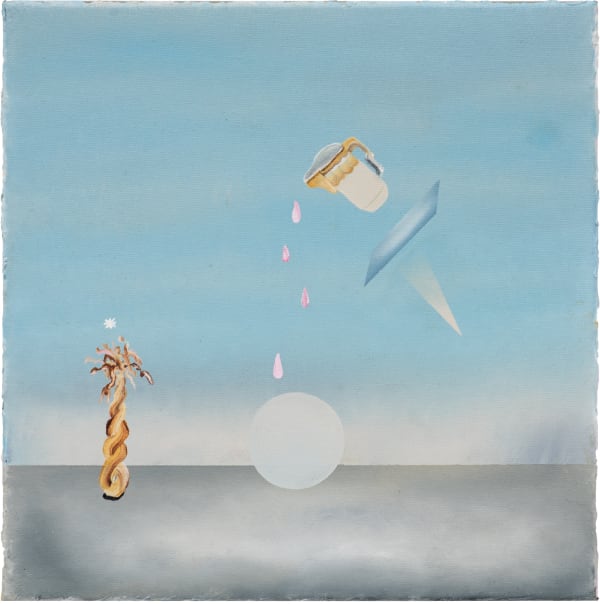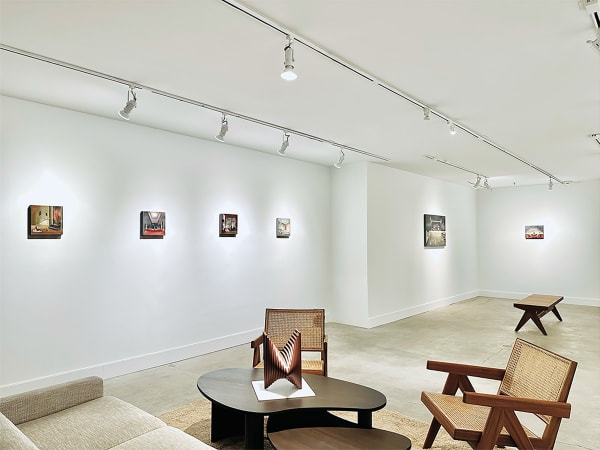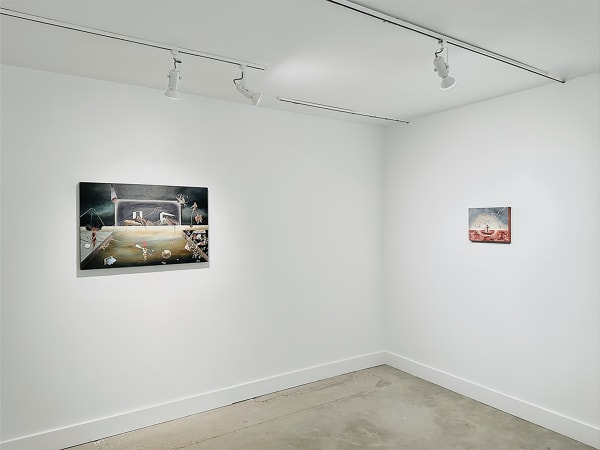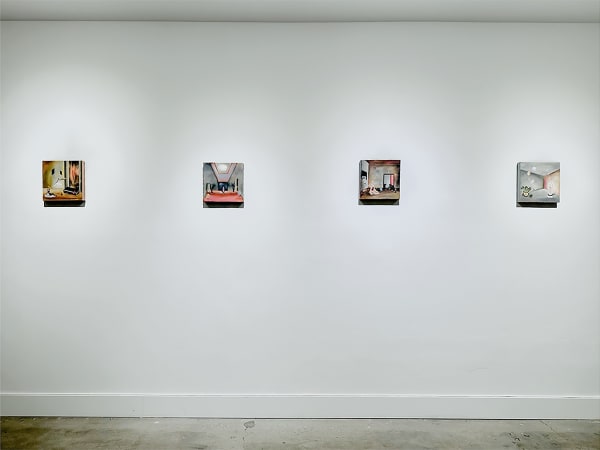A Thinning Veil: Rebecca Sharp
-
-
In her first solo exhibition at Hexton Gallery, Brazilian artist Rebecca Sharp presents a new body of work that elegantly reveals the in-between space one cannot see but intuitively feels. Like postcards from this in-between world, she transports us to the streets of her native Brazil where the spiritual and real twist into one another in the confluence of Brazil’s colliding cultures. Sharp hints at her country’s complex cultural history and its loosely woven tapestry of indigenous tribes, Portuguese settlers, Africans, and Japanese agriculture workers. Her eye is trained on the many belief systems that came with each and how they brush against one another to create a kaleidoscopic effect of cultural and spiritual depth. The doors to these worlds are in plain sight, not confined simply to religious structures but alive and accessible on Brazil’s street corners for whomever feels the calling to participate. Chants, scents and rituals inundate the streets creating a cacophony of voices that are everything, everywhere, all at once.
Sharp’s paintings are a window into these different planes of existence. Leaning into the notion of Anthropofagia, a term derived from cannibalism, the artist states, “it is a metaphor for ‘devouring’ ideas, cultures, dreams, information, everything really, and ‘digesting’ it into a new creation. I think nature works like this.” Associated with a historic art movement from the 1960’s, it has often been interpreted as a resiliency adopted by Brazilian culture to survive appropriation. Much the way mycelian networks digest dead matter and transform it into nutrients, Brazilian culture adopted its many influences, trauma and shock to make something unique, something wholly its own.
Sharp is visually anchored in the Surrealist traditions proliferated by such luminaries as Max Ernst, Yves Tanguy and perhaps most pervasively, Salvador Dalí. Yet Sharp’s compact portals take surrealism into a new domain – rather than the unconscious mind, Sharp slips us between the seen and unseen worlds of the spirit and the tangible, revealing the thinning veil between both.
There is a bravery in looking back to move forward, to paint in a tradition that opened the first quarter of the 20th century that is now being revisited by Sharp almost a hundred years since the first Surrealist exhibitions were staged in Paris. She carries the torch of a storied lineage, not only from the original Surrealist group but also the long line of female Surrealist who have continued to gain attention: Louise Bourgeois, Leonora Carrington, Dorothea Tanning, Remedios Varo, and notably Kay Sage with whom Sharp has a particular affinity. They have come to the forefront as collectors, curators and art dealers continue to re-evaluate their ongoing contribution to the Surrealist canon.
Sharp approaches her practice with an exacting precision that “quietly updates Surrealism,” as written by the New York Times art critic Roberta Smith upon seeing the work for the first time. The artist’s tightly rendered paintings pack a punch typically reserved for canvases three to four times their size. Still, she is able to eloquently transport us to vast rooms and landscapes of epic proportions all within the confines of a 10”x10” picture plane. How is it that such intimate paintings can command such presence? In Sharp’s case, less is indeed more.
The artist’s expansive vision comes to us “from a post-office at the edge of a black hole,” as Sharp recently noted, sliding us through the thinning veil of the spiritual and physical so that we may see ourselves not as a singular entity but rather as the culmination of our history, spirituality, and the mystery of the unknown.
-

-
SELECTED WORKS
-
INSTALLATIONS


